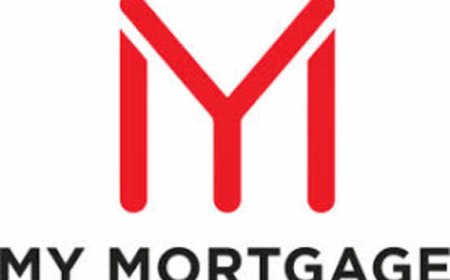Grow Your Startup with These Scalable Uber Clone App Features
Discover the scalable Uber clone app features like multi-city support, modular design, and real-time tracking that help startups grow and expand efficiently.

Scaling a ride-hailing business requires more than just a digital replica of Uber. To compete and grow in the fast-evolving on-demand space, startups need an Uber clone app packed with scalable, growth-oriented features. A well-developed Uber clone doesnt just handle ridesit becomes a powerful platform that supports business expansion, customer retention, and operational efficiency.
In this blog, well break down the most important features of a scalable Uber clone app and explain how each of them contributes to startup growth.
Why Uber Clone Apps Are a Smart Choice for Startups
Before diving into the features, its important to understand why entrepreneurs continue to choose Uber clone apps:
- Faster time to market Instead of building from scratch, you get a ready-to-deploy solution.
- Lower development costs Reusing proven architecture significantly reduces your budget.
- Proven user experience You dont have to reinvent what already works.
- Scalability options Features can be added or removed based on business size and market response.
Uber clone apps are a great foundation, but what makes them truly effective is how theyre built to grow with your business. Now, lets explore the features that drive that growth.
Must-Have Features That Power Startup Success
1. Real-Time GPS Tracking and Route Optimization
Customers expect accurate ETAs and real-time location updates. For startups, this feature is essential not just for user satisfaction, but also for fleet management and reducing driver idle time. Route optimization helps in minimizing fuel costs and improving delivery/riding efficiency.
2. Dynamic Pricing and Surge Management
As demand increases, so should your pricing. Surge pricing not only helps manage high-demand periods but also increases driver availability and maximizes your revenue. It allows you to make the most of peak hours, holidays, and major events.
3. Multi-Service Support
Want to scale beyond just ride-hailing? A robust Uber clone can support additional services like:
- Food delivery
- Package delivery
- Grocery delivery
- Bike taxis
- Car rentals
This versatility makes your platform adaptable, giving you more market opportunities under a single umbrella.
4. Powerful Admin Dashboard
The admin panel should give you complete control over operations:
- Driver & customer management
- Trip analytics
- Revenue tracking
- Commission management
- Service configuration
This is the brain of your business, and it must be intuitive, scalable, and secure.
Read More: How Uber Clone App Development is Transforming On-Demand Mobility
5. Integrated Wallet and Multiple Payment Gateways
Support for in-app wallets, credit/debit cards, UPI, and local payment gateways ensures you cater to a wide range of users. The smoother the payment experience, the faster your customer base grows.
Features That Help with Customer Retention
6. Loyalty Programs and Promo Codes
User acquisition is important, but retention is where profits grow. Features like referral bonuses, loyalty points, and promo codes keep users engaged and returning to your app.
7. Scheduled Rides and Pre-Bookings
Allow users to book in advance. This is especially useful for airports, corporate travel, or events. Scheduled rides improve planning and ensure a better experience for both customers and drivers.
8. Live Chat and Support Integration
Customer service can make or break your startup. In-app chat, helpdesk access, and quick issue resolution features build trust and user satisfaction.
Tech Features That Support Scalability
9. Cloud-Based Infrastructure
Startups often begin small but need to grow fast. A cloud-based back-end ensures:
- Faster data processing
- Uptime reliability
- Global scalability
- Load balancing during traffic spikes
Apps hosted on scalable cloud platforms like AWS, Google Cloud, or Azure can easily expand without performance issues.
10. Microservices Architecture
Instead of building a single monolithic system, Uber clone apps can be built using microservices. This allows startups to update features independently, improve reliability, and scale components like payments, ride requests, or driver onboarding without downtime.
11. Driver & Fleet Performance Analytics
With smart dashboards and analytics, you can:
- Track driver performance
- Monitor customer behavior
- Identify peak traffic zones
- Plan future service rollouts based on real data
This insight-driven growth approach helps you pivot faster and scale wisely.
Features to Enhance Driver Experience
12. Driver Incentives and Earnings Tracker
To scale successfully, you need satisfied drivers. Incentive management tools and real-time earning dashboards help keep them motivated and engaged.
13. Navigation Integration and Route History
Turn-by-turn directions via Google Maps, Waze, or Mapbox ensure drivers can serve more trips efficiently. Access to trip history helps them keep track of rides, earnings, and feedback.
14. Availability Toggle & Break Mode
Letting drivers control when they go online or take breaks gives them a sense of control and reduces burnout, improving long-term retention.
Local Market Adaptability Features
15. Multi-Language and Multi-Currency Support
To target different regions or scale internationally, your app should support local languages and currencies. This enhances accessibility and increases adoption in local markets.
16. Regional Compliance and Document Upload
Every region has different rules for insurance, driver licenses, and taxes. A built-in module for document upload, verification, and compliance helps you stay within legal boundaries without third-party dependencies.
Benefits of Scalable Features for Startups
- Faster expansion into new regions
- Higher user engagement with personalization options
- Efficient fleet management and cost control
- Increased revenue streams with additional services
- Improved app performance under high demand
Whether youre starting in a small town or planning to dominate in multiple cities, these features ensure that your Uber clone app scales smoothly and supports your business model.
Conclusion
With the right features in place, an Uber clone app becomes much more than a taxi-booking toolit becomes a dynamic growth engine. Startups that focus on scalability, service diversity, and real-time performance optimization are the ones that not only survive but thrive in the on-demand economy.
If youre ready to launch, enhance, or scale your ride-hailing business, partnering with the right app development company can make all the difference. A future-ready Uber clone app, equipped with the features discussed above, gives you a strong competitive edge and long-term sustainability.
Q1: What makes a scalable Uber clone app different from a basic one?
A scalable Uber clone app includes advanced features like multi-service support, cloud hosting, microservices architecture, and analytics tools that help the business grow and adapt over time.
Q2: Can I add new services like delivery or rentals later?
Yes, the best Uber clone apps are modular, so you can easily integrate additional services when you're ready to expand.
Q3: How long does it take to launch an Uber clone app?
If you're using a ready-made white-label solution, your app can go live in as little as 24 weeks depending on customization and testing.
Q4: Will I be able to track driver and rider activity in real-time?
Absolutely. Real-time tracking and dashboards are essential features of any professional Uber clone app.
Q5: Is it possible to integrate local payment gateways and languages?
Yes. Multi-language and multi-currency support are standard in high-quality Uber clone solutions designed for global and regional expansion.


























